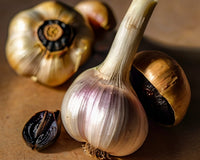Most people only associate calories with food and drinks, but anything that contains energy has calories. Food calories described on food labels are calories (kcal).
The U.S. government points out that the average man needs 2,700 calories a day, while a woman needs 2,200 calories a day.
Not everyone needs the same number of calories every day. People have different metabolisms, they burn energy at different rates, and some people lead more active lifestyles than others.
The recommended daily calorie intake depends on several factors, including: general health, physical activity needs, weight, height, body shape, and more. As we age, we consume fewer calories each day.
The human body needs calories to survive. Without energy, cells in the body will die.
If people consumed only the required number of calories each day, they would likely live a healthy life. Consuming too few or too many calories can eventually lead to health problems.
The number of calories in foods tells us the potential energy they contain. It’s not just the calories that matter, it’s also what you’re getting them into.
The three main food calories are 1 gram of carbohydrates containing 4 calories, 1 gram of protein containing 4 calories, and 1 gram of fat containing 9 calories. With high-calorie meals served in restaurants or targeted at young people, one must pay close attention to where the calories are consumed.
Empty calories are food calories that provide energy but have little nutritional value. Portions of food that provide empty calories contain little dietary fiber, amino acids, antioxidants, dietary minerals, or vitamins. According to the USDA, empty calories come primarily from solid fats and added sugars.














